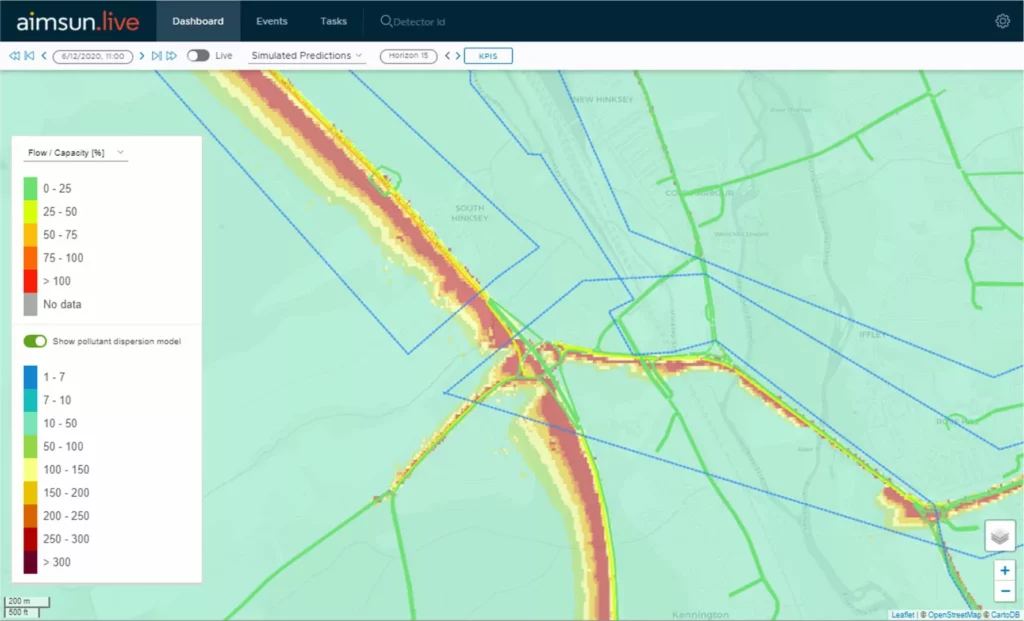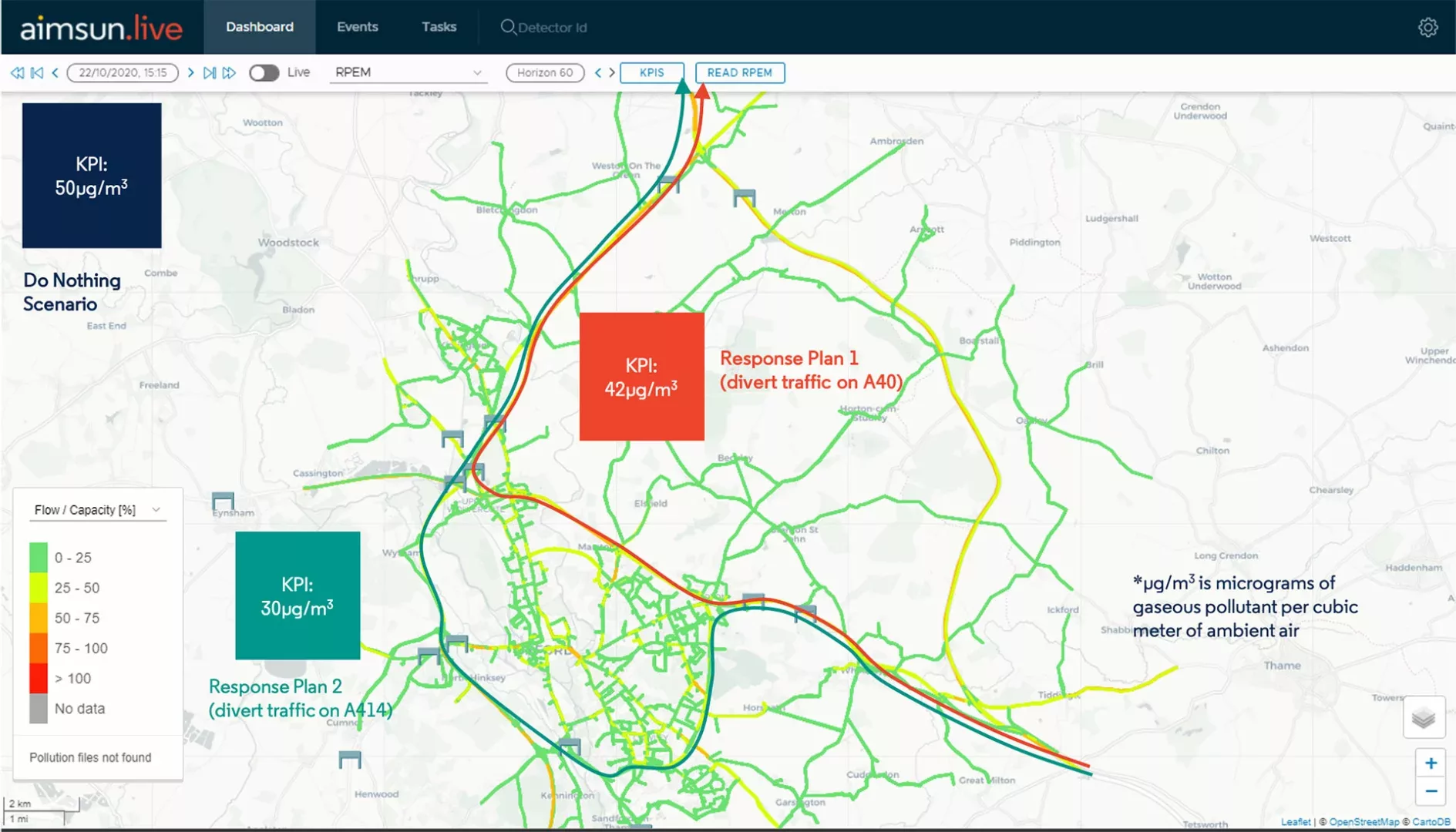A new traffic management technique which has been trialled in Oxfordshire for the past year has proved how air quality can be significantly improved through a technique to manage traffic jams before they happen.
The NEVFMA scheme uses global transport modelling firm Aimsun’s traffic simulation to reduce congestion and therefore harmful, traffic-related pollution, with analysis over the last two months showing the system delivers an average 7% decrease in emissions, with improvements of up to 40% recorded on some days.
NEVFMA, which stands for Network Emissions/Vehicle Flow Management Adjustment, is a project funded by Highways England via Innovate UK and delivered in partnership with EarthSense, Siemens Mobility and Oxfordshire County Council. It uses the Aimsun Live solution to generate short-term predictions for traffic and nitrogen dioxide (NO2) dispersion to help Traffic Control Centre operators know when traffic and therefore emissions will build up, and make the most effective traffic management decisions to minimise congestion.
Last June, the trial began using Aimsun Live to predicting short-term traffic congestion using real-time traffic information and traffic modelling. During the initial months of the project, which took place during significant Covid-related restrictions, Aimsun Live’s analysis of mitigation strategies meant traffic, tail pipe emissions and therefore air quality could be improved 65% of the time.
The results are even more impressive for the past two months when traffic has been much closer to normal conditions. Two thirds of the time, a response plan analysed in Aimsun Live led to a better traffic management strategy compared to base Intelligent Transport Systems settings, leading to an average decrease of 7%, with an incredible 40% improvement observed in the most extreme cases.
“The system reliably analyses and reports improved air quality and mitigation strategies to tail pipe emissions,” commented Aimsun’s UK Managing Director Gav Jackman. “However we believe that further optimisation of traffic management response plans could enhance this even further. Now that traffic volumes have increased, we see even bigger benefit of evaluating and deploying traffic management response plans in real time based on varying traffic flows and air quality conditions.”
By using Aimsun Live’s real time predictions of traffic and Tail Pipe Emissions, and using the Earthsense real time Air Quality predictions, the mesoscopic model is a decision support tool comparing traffic management response plans.

The simulation of predicted NO2 pollution levels from EarthSense’s MappAir dispersion model integrated with Aimsun Live provides the first real-time, traffic-linked dispersion model. This system allows the user to visualise pollution and tackle emissions in official government Air Quality Management Areas alongside other key regions of interest.

Aimsun’s solution uses dynamic simulation to allow the model to generate predictions for individual vehicles in under four minutes. These vehicle predictions are the basis for calcuating the concentration of the predicted NO2 using forecasts of meteorological and pollutant data in the upcoming four minutes. Siemens Mobility has integrated the EarthSense air quality sensor with the county’s traffic signal infrastructure, such that it can be easily retrofitted to existing signal heads, providing validation of on-ground pollutants and enabling traffic control interventions to be based on air quality levels.
The system is designed to analyse traffic strategies, allowing up to three alternate scenarios with changes to signal timings, traffic restrictions or other network changes to be compared in the same window. Traffic managers in the county’s traffic control room can then choose the optimal mitigation strategy to reduce congestion and therefore emissions.
(Pictures – Aimsun)




























